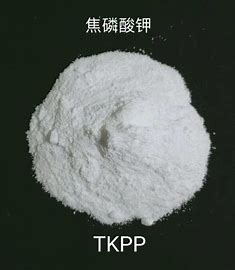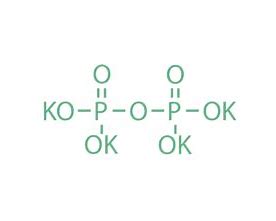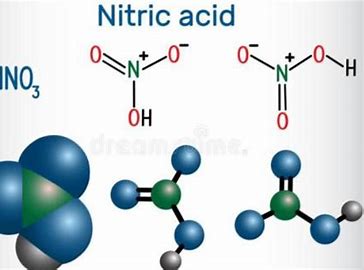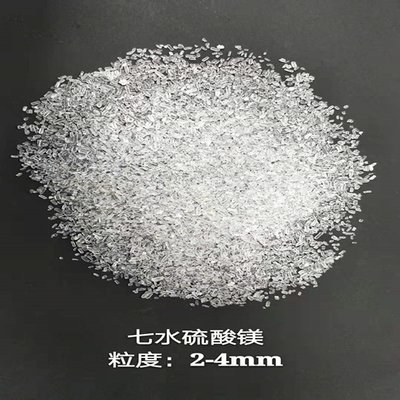what is sodium bisulfite
You might not recognize the name sodium bisulfite (NaHSO₃) offhand, but this chemical compound is likely at work in more aspects of your daily life than you realize. From preserving your favorite wine to helping ensure your drinking water is clean and safe, this versatile substance is a quiet powerhouse.
1. What is Sodium Bisulfite? The Basic Chemical Identity
Let’s start with the chemical blueprint. Sodium bisulfite is an inorganic compound with the chemical formula NaHSO₃. You might also hear it referred to as sodium hydrogen sulfite or even monosodium sulfite.
- Appearance: Typically, it looks like a white to yellowish-white crystalline powder or a granular solid. When dissolved in water, it forms a clear solution.
- Odor: It has a distinct, slightly sulfurous odor—think rotten eggs, but milder. This smell comes from the release of sulfur dioxide (SO₂) gas, especially when it meets acids or moisture.
- Solubility: Good news for its many liquid applications: sodium bisulfite readily dissolves in water, creating a slightly acidic solution.
- Stability: In its solid form, it’s fairly stable, but don’t let it sit exposed! It can slowly oxidize to sodium sulfate if left open to air and moisture. In solution, it’s more reactive and can break down, especially under acidic conditions or heat.
On a molecular level, it’s interesting to note that sodium bisulfite isn’t always a “true” compound in solution. Instead, it often exists as a mixture of salts that dissolve into sodium ions (Na+) and bisulfite ions (HSO3−). It’s also closely related to sodium metabisulfite (Na2S2O5), which can form when sodium bisulfite dehydrates and readily transforms back into bisulfite ions when dissolved in water.
2. Key Chemical Properties: The Science Behind its Superpowers
Sodium bisulfite’s diverse applications aren’t magic; they’re a direct result of its fascinating chemical properties:
- Reducing Agent Extraordinaire: This is arguably its most important trick. The bisulfite ion (HSO3−) loves to donate electrons. This means it can “reduce” other substances – causing them to gain electrons and decrease their oxidation state.
- A Touch of Acidity: When you dissolve sodium bisulfite in water, it forms a weakly acidic solution. Thi characteristic allows it to react with various bases and helps adjust pH levels in certain applications, giving chemists precise control.
- The Power of Sulfur Dioxide (SO₂): Under acidic conditions or when heated, sodium bisulfite readily liberates sulfur dioxide gas. This property is crucial for its roles as a preservative and antimicrobial agent, because SO₂ is remarkably effective at inhibiting the growth of many undesirable microorganisms.
- ** aldehyde and Ketone Friend:** It has a special ability to form addition compunds with aldehydes and some ketones.
3. Uses and Applications of Sodium Bisulfite: Everywhere You Look!
The sheer versatility of sodium bisulfite makes it an indispensable chemical across an astonishing array of industries:
- Food and Beverage Industry (Our Food’s Best Friend – E222):
- Preservative: It’s a widely accepted food additive that tirelessly works to prevent spoilage by inhibiting the growth of bacteria, yeasts, and molds in a variety of products.
- Antioxidant: Say goodbye to unsightly browning! It actively prevents undesirable enzymatic browning and oxidation, keeping foods like dried fruit (think those bright apricots and plump raisins), fruit juices, and even fresh-cut vegetables looking and tasting their best.
- Stabilizer: Crucial in wine and beer production, it prevents oxidation, halts unwanted bacterial growth, and helps stabilize the delicate flavors that define your favorite brews and vintages.
- Water Treatment (The Invisible Guardian):
- Dechlorinating Agent: A true unsung hero, it’s extensively used to remove residual chlorine and chloramines from municipal drinking water, wastewater, and various industrial process waters. This is absolutely critical for protecting aquati life and preventing costly oxidative corrosion in pipes and equipment.
- Oxygen Scavenger: In powerhouse boiler systems, it’s employed to meticulously remove dissolved oxygen, which helps prevent corrosion in boilers and pipelines, extending their lifespan.
- Pulp and Paper Industry (Making Things Brighter):
- Bleaching Agent: It plays a significant role in bleaching wood pulp, helping to produce the bright, clean paper products we use every day.
- Pulping Aid: It’s also utilized in specific chemical pulping processes to break down wood fibers.
- Textile Industry (Protecting Our Fabrics):
- Antichlor: After fabrics are bleached with harsh chlorine-based agents, sodium bisulfite steps in to neutralize and remove any leftover chlorine, preventing fiber damage and ensuring our clothes stay colorfast.
- Reducing Agent: It’s also applied in various dyeing and printing processes to achieve specific color effects.
- Pharmaceutical Industry (Keeping Medicines Stable):
- Preservative and Antioxidant: It acts as a vital preservative and antioxidant in some pharmaceutical formulations and injectable drugs, ensuring their stability and preventing degradation over time.
- Excipient: You might even find it as an inactive ingredient (excipient) in certain medications.
- Photography (Developing Our Memories): A classic application, it’s a key component in some traditional photographic developing solutions, where it acts as a preservative and reducing agent for the silver halides.
- Chemical Synthesis (Building Blocks of Chemistry): As a versatile reducing agent, it’s invaluable in countless organic and inorganic chemical reactions. Chemists use it for purification, the synthesis of intermediate compounds, and various specialized conversions.
- Other Industrial Uses: Its reach extends even further, being found in leather tanning
4. Safety Considerations and Handling Precautions: Handle with Care!
While sodium bisulfite is incredibly useful, it is a chemical that demands respect and careful handling due to its potential hazards. Always put safety first!
- Health Hazards:
- Corrosive: It can ause severe irritation and chemical burns to the skin, eyes, and respiratory tract upon contact.
- Inhalation: Inhaling its dust or, more dangerously, the sulfur dioxide gas it can release, can severely irritate the nose, throat, and lungs, leading to coughing, wheezing, and shortness of breath. For individuals with asthma or sulfite sensitivities, exposure can trigger severe allergic-like reactions or life-threatening asthma attacks.
- Ingestion: It’s harmful if swallowed and can potentially cause irritation or burns to the digestive system.
- Hazardous Gas Release: This is a crucial safety point: if sodium bisulfite comes into contact with acids, it readily liberates highly toxic sulfur dioxide (SO₂) gas. Always be aware of this reactivity
- Personal Protective Equipment (PPE): When handling sodium bisulfite, always wear appropriate PPE. This includes chemical-resistant gloves (like nitrile), comprehensive eye protection (safety glasses or goggles, or a full face shield), and protective clothing.
- Ventilation: Use sodium bisulfite in a well-ventilated area, preferably a fume hood, to prevent inhalation of dust or potentially harmful gases.
- Storage: Store it in a cool, dry place, strictly away from incompatible materials (especially acids, strong oxidizers, and moisture). Always keep containers tightly closed to prevent degradation and exposure.
- Safety Data Sheet (SDS): Before you even open a container, always consult the product’s Safety Data Sheet (SDS). This document provides comprehensive and crucial safety information specific to the product you are using.
Conclusion: The Ubiquitous and Indispensable Sodium Bisulfite
Sodium bisulfite (NaHSO₃) is far more than just a chemical name on an ingredient lst. Its remarkably wide array of applications—from preserving foods and treating water to facilitating complex industrial processes—makes it an indispensable component in countless sectors worldwide. While its versatility is undeniable and its benefits are widespread, understanding its potential hazards and strictly adhering to proper safety and handling protocols are absolutely paramount to safely harnessing the many advantages of this truly ubiquitous chemical.
Frequently Asked Questions (FAQ)
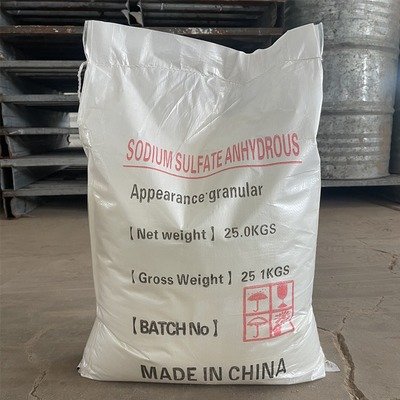
- What is the chemical formula for Sodium Bisulfite? The chemical formula for Sodium Bisulfite is NaHSO₃.
- Is Sodium Bisulfite the same as sulfites? Sodium bisulfite is one specific type of sulfite. Sulfites are a broader class of sulfur-based compounds that are widely used as preservatives and antioxidants in food and various other applications.
- What are the main uses of Sodium Bisulfite? Its primary uses include acting as a food preservative (E222), a dechlorinating agent in water treatment, a reducing agent in chemical synthesis, and a bleaching agent in industries like pulp and paper.
- Is Sodium Bisulfite dangerous to handle? Yes, sodium bisulfite can be dangerous if not handled correctly. It’s corrosive to skin and eyes, and can release toxic sulfur dioxide gas, especially when exposed to acids. Wearing proper PPE and ensuring good ventilation are essential for safety.
- Why is Sodium Bisulfite used in wine? In wine production, sodium bisulfite (or other sulfites) is used as a preservative to prevent oxidation, which can cause the wine to brown or lose its delicate flavors. It also inhibits the growth of unwanted bacteria and yeasts, thereby ensuring the wine’s stability and overall quality.
Contact us:https://www.yuhanchemi.com/contact

